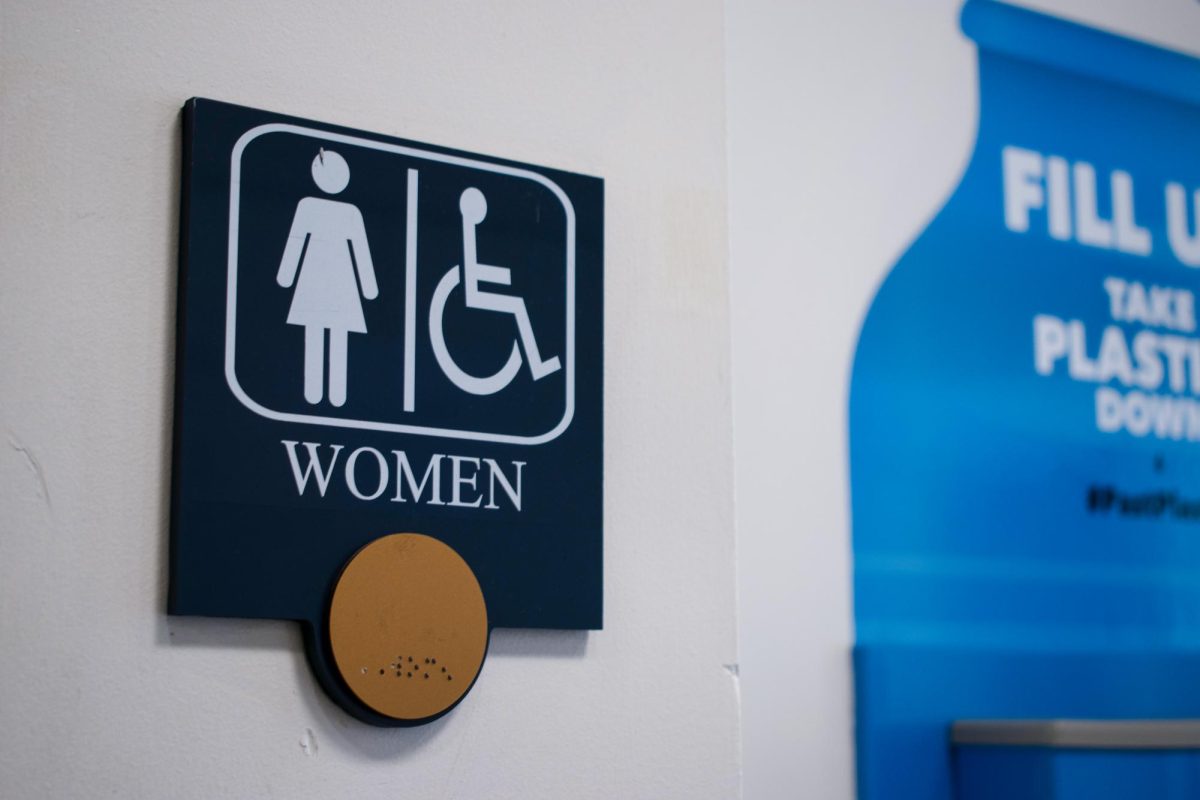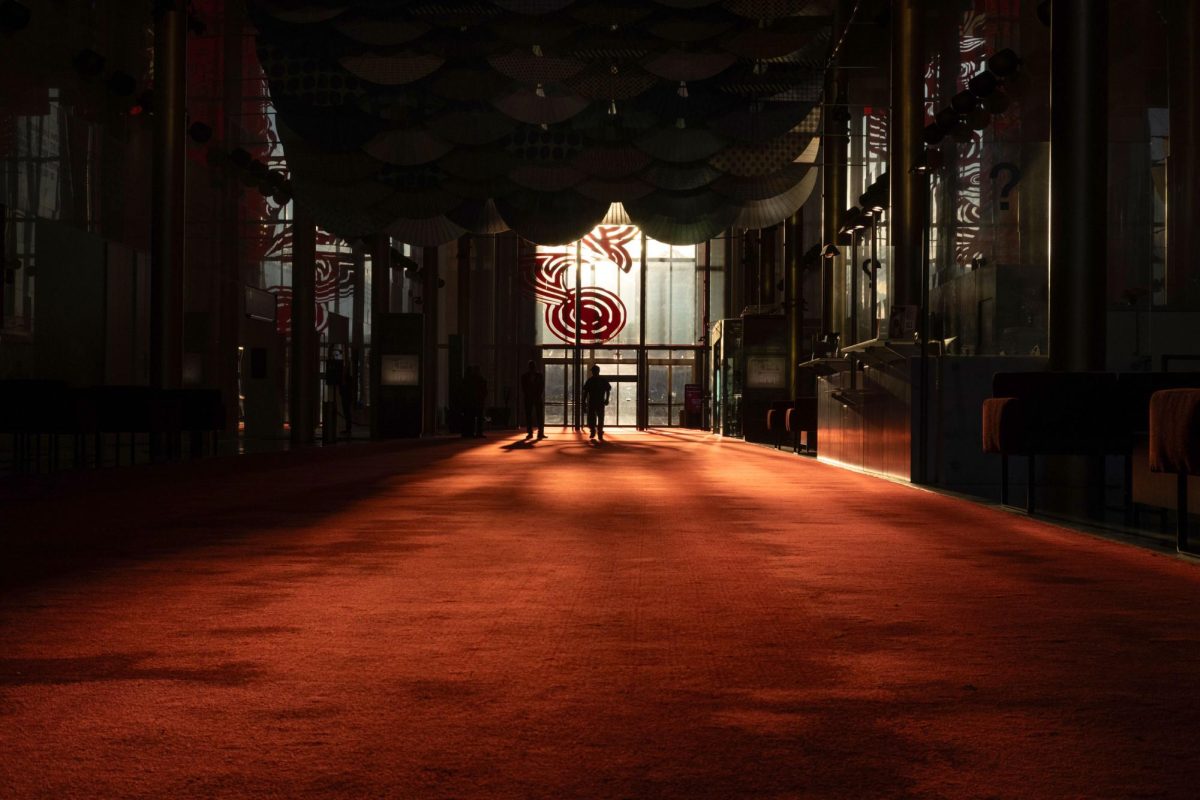Students said they have struggled to navigate campus due to worn down Braille signage in Phillips, Tompkins and Shenkman halls.
The Hatchet surveyed 565 signs in Tompkins, Shenkman and Phillips halls from April 25 through May 9, finding that about 10 percent of signs with Braille were missing one or more raised dots. About 34 percent of signs in the three buildings did not include Braille at all.
About 40 percent of rooms in these three halls are not accessible to blind students because the room signs either have broken Braille dots or are missing them entirely, hindering their ability to locate classrooms and offices.
The three halls had 36 total signs with broken or missing dots: in Phillips Hall, 17 of the 143 signs are broken and 84 do not have Braille at all; in Shenkman Hall, 18 of the 222 signs with Braille are broken and 74 do not have Braille at all; in Tompkins Hall, one sign with Braille is broken and 34 signs do not have Braille at all.
The Americans with Disabilities Act prohibits discrimination against disabled people and outlines specific accessibility regulations for signage — like that tactile signage must be posted on “interior and exterior signs identifying permanent rooms and spaces” — from the U.S. Access Board.
Temporary signs that are posted for seven days or less or those that provide building addresses, detailed directions for a destination or occupant names are exempt from these regulations, per the Access Board.
A University spokesperson said ensuring accessibility for the “entire community” is a “top priority,” and that the University updates signage during building renovations. The spokesperson said students experiencing difficulties with signage in University buildings should reach out to Disability Student Services directly.
“University signage is regularly updated to current code, including required Braille, when locations are renovated,” the spokesperson said. “If students encounter difficulties at any location, reviews and upgrades may be made as appropriate.”
The spokesperson declined to comment on whether GW includes Braille signage in all University buildings and outside all rooms or how officials monitor the implementation, upkeep and ensure accuracy of signs.
The Braille Authority of North America makes minor changes to Braille codes, mostly to align more closely with modern print, including symbols like dollar signs and asterisks standing for letters, according to the National Federation of the Blind. BANA adjusted the Braille code to include the copyright and trademark symbols in 2007.
Tony Stephens, the director of communications for American Foundation for the Blind, said signage for rooms with permanent functions normally includes a direct translation, including the room’s name.
“The signage is normally an equal equivalent of whatever a sign would say,” Stephens said.
Restrooms, locker rooms, cafeterias, libraries, conference rooms, mechanical rooms and other permanent rooms or spaces must include room and floor numbers and letters, names and labels, according to regulations.
In Phillips Hall, the University labeled office spaces and classrooms by room numbers. The third floor restroom — which signs on other floors indicate is an ADA accessible restroom — says “women” and “men” in Braille. The seventh floor bathrooms of Phillips have a wheelchair accessible symbol and are labeled according to gender but also do not label the room as a bathroom.
Stephens said Braille signage is “pretty durable” and shouldn’t need to be replaced if the sign installers are “doing it right.”
“If something is damaged and it’s replaced, you have to replace it with what was previously there — you can’t downgrade it,” Stephens said.
Maiya Little, a sophomore political communication major who is legally blind, said the “worn down” signs makes reading Braille more difficult because it is dependent on differentiating the raised dots. Little said the skin’s oils wear down Braille signs because the nature of their usage is touch, which over time renders the signs unusable. When this happens, Little said blind students are unable to locate rooms they need.
“It forces a lack of independence,” she said.
Little said she isn’t completely reliant on Braille signage and often uses her remaining vision and recalls routes and patterns to get around campus. She said when classroom assignments change last-minute and she cannot rely on these pathways, functional Braille is a critical tool.
“For someone who is entirely blind and relies entirely on Braille, that is the largest mechanism of ensuring you’re in the right classroom or going to the right bathroom or getting to the right door which can lead to unfortunate mishaps,” Little said.
Madison Jennings, a co-president of the Disabled Students Collective, said students in DSC have voiced concerns to the executive board about the braille in “older buildings” — specifically, Tompkins, Shenkman, Rome and Phillips halls — being “faded” and “unkept.” She said members reported struggling to navigate campus due to the worn down signage.
“When I’m looking at the Braille, some of it looks to have deteriorated or isn’t very clear, but I’m not a Braille reader myself,” Jennings said.
Little said the discoloration of Braille — which often occurs on signs after a lot of use — might be obvious to sighted individuals, but it is indiscernible to blind students. Little said she thinks dysfunctional Braille signs are sometimes not caught if they are checked by nonblind individuals, instead of blind people who would be using the signage.
“A lot of people fail to notice when Braille signs become unusable,” Little said. “Because what is unusable to a blind person is a lack of depth, not necessarily a lack of color. A lot of the signs still have different color dots so people assume they’re still usable when, in reality, they’re almost dull in a way that’s unreadable.”
Norah Woods contributed reporting.







